Library of Congress, Thomas Jefferson Building
Introduction
Text-to-speech Audio
Images
Aerial view of the Jefferson Building, home of the Library of Congress since 1897.
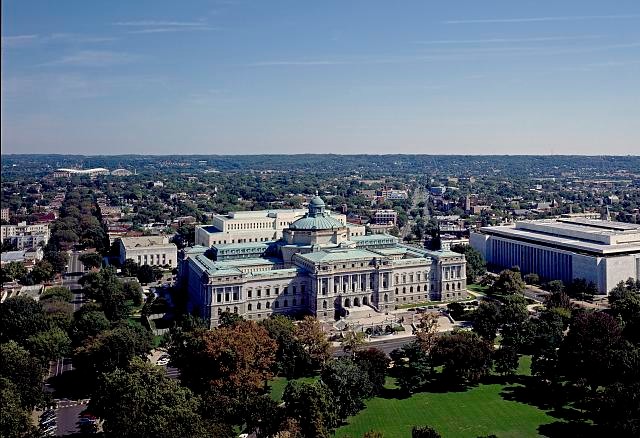
Night-time view of the facade of the Jefferson Building.
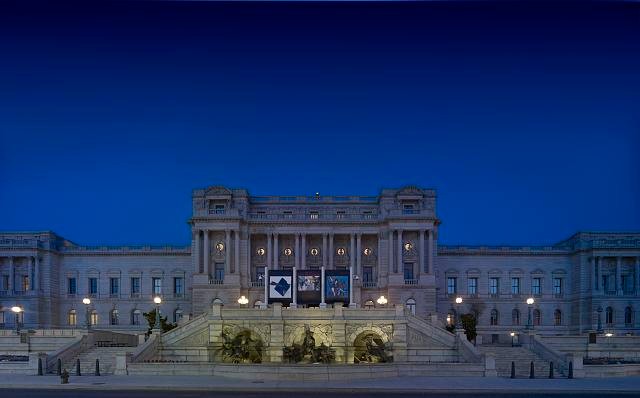
The Jefferson, Adams, and Madison buildings, pictured here, comprise the Library of Congress.
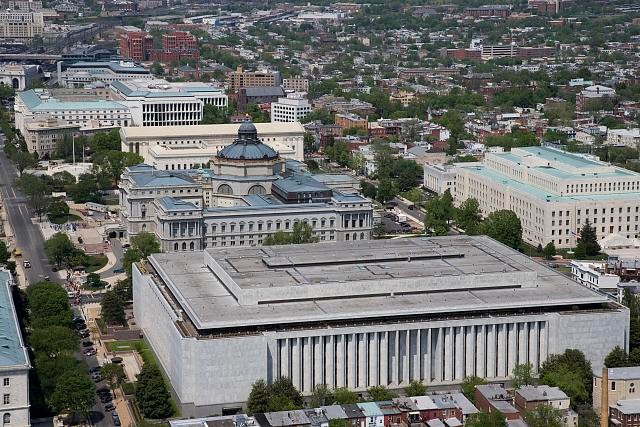
The main reading room of the Library of Congress.
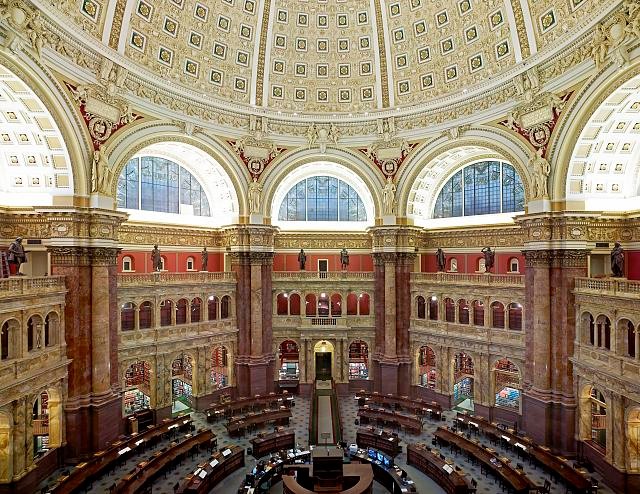
Night-time view of the facade of the Jefferson Building.

The Jefferson, Adams, and Madison buildings that house all 158 million items of the Library of Congress.

America's Library: The Story of the Library of Congress, 1800-2000. James Conaway. Yale University Press: 2000.
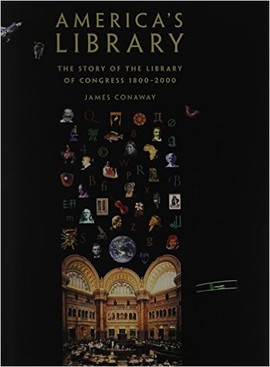
The Library of Congress: The Art and Architecture of the Thomas Jefferson Building. John Y. Cole. W. W. Norton & Company: 1998.
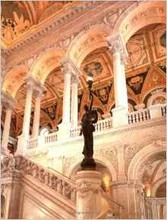
Backstory and Context
Text-to-speech Audio
The Library of Congress was created early on in our nation’s history as a store of reference materials for Congress. It was established in 1800 as Congress moved from Philadelphia to Washington, D.C. Unfortunately, when the British set fire to the Capitol in 1814, some of the material held by the Library of Congress was lost. In response, Thomas Jefferson sold his personal collection of 6,487 books to Congress in order to create the basis of a new library.
Jefferson's diverse collection mirrored his interests in a broad spectrum of subjects from history and language to art and science. Jefferson's personal library jump-started what would become one of the world’s largest libraries. Thomas Jefferson said, “There is, in fact, no subject to which a member of Congress may not have occasion to refer.”1 Therefore, from its founding in 1800, the Library of Congress housed books on an array of subjects. When the British burned the Capitol in 1814, the original library collection was lost. After the fire, Jefferson sold his vast and varied collection of 6,487 books to Congress for $23,950, helping to jump start another incarnation of the Library of Congress.2
The mid 1800s saw the Library of Congress becoming not only a storehouse of thousands of books in many languages and covering a variety of topics, but also a collection of government documents as well. The library evolved into much more than just a book and document depository.
In 1870, the Library of Congress was under the direction of head librarian, Ainsworth Rand Spofford, who brought all copyrights under the umbrella of the Library of Congress. One of the conditions of obtaining a copyright in the United States is for a copy of the item to be housed at the Library of Congress. From the late 1800s on, countries such as China, Turkey, and others also gifted special collections rooted in their countries’ culture. These all contribute to the enormous international collection the library holds today.3
In 1897, the Library of Congress moved from the Capitol Building to the Thomas Jefferson Building. Since then, it has further spread to also include the John Adams Building (1939) and the James Madison Building (1980). The Library of Congress now holds over 164 million items in 460 languages, making it the second largest library in the world. Since its establishment in 1800, the Library of Congress has become a symbol of international learning. Most research libraries also follow the Library of Congress cataloging system. This library is the second largest in the world and its influence on learning, copyright laws, and cataloging systems makes it a historical treasure.4
Sources
2. Library of Congress, "History of the Library." Accessed November 30, 2015. http://loc.gov/about/history-of-the-library/
3. John Y. Cole, "The Library of Congress Becomes a World Library, 1815-2005," Libraries and Culture 40, no. 3 (2205): 387-389.
4. Library of Congress, "History of the Library." Accessed November 30, 2015. http://loc.gov/about/history-of-the-library/; Wikipedia, "List of largest libraries," Accessed April 2018.https://en.wikipedia.org/wiki/List_of_largest_libraries
